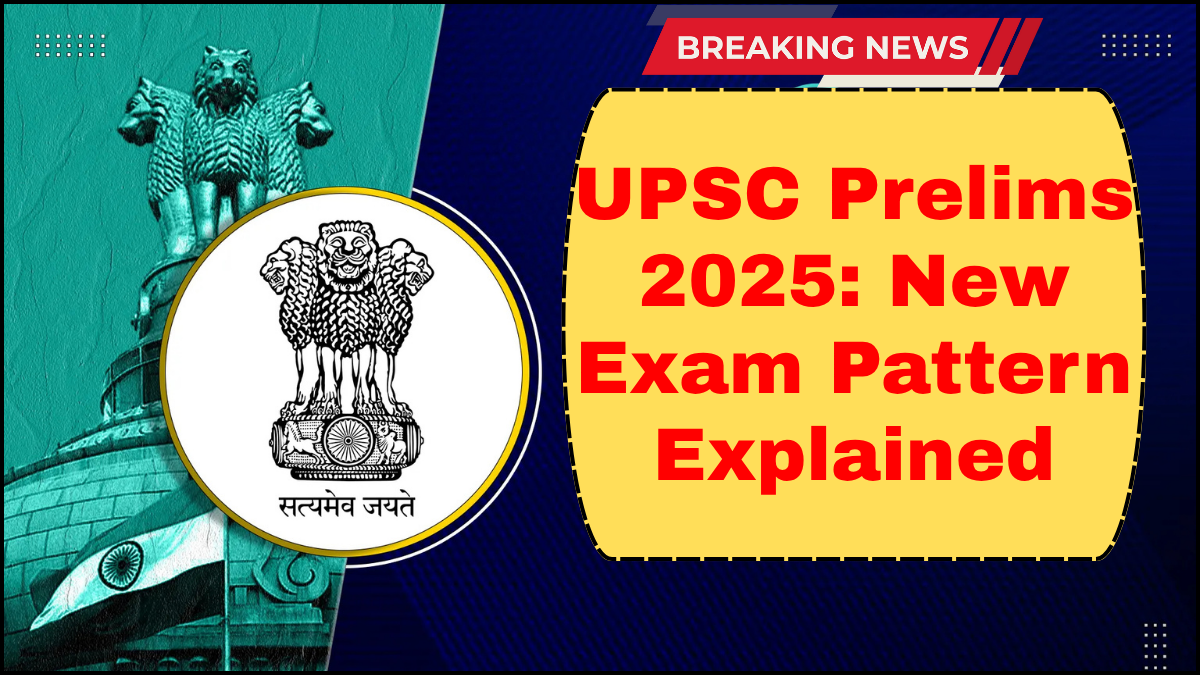The UPSC Prelims 2025 Exam Pattern has undergone notable revisions, signaling a strategic shift in how India’s top civil service aspirants will be evaluated. These changes are aimed at aligning the examination process with modern governance challenges, real-world problem-solving, and analytical depth. Whether you’re a first-time candidate or a repeat aspirant, understanding the new format is crucial for building a smart preparation strategy.

Let’s break down everything you need to know about the revised structure, new question types, and what it means for your UPSC journey.
Overview of UPSC Prelims Structure
The Union Public Service Commission (UPSC) continues to conduct the Civil Services Preliminary Examination as the first screening phase of the coveted IAS, IPS, IFS, and other Group A and B services.
As always, the prelims remain objective in nature and consist of two papers:
-
General Studies Paper I (GS-I)
-
Civil Services Aptitude Test (CSAT) or General Studies Paper II
However, 2025 introduces some significant modifications in both content and structure.
UPSC Prelims 2025 Exam Pattern: What’s New?
Here’s a breakdown of the UPSC Prelims 2025 Exam Pattern:
1. Inclusion of Analytical-Based Questions
A major shift is the integration of real-life problem-solving scenarios in Paper I. Candidates will now face caselets and situation-based MCQs that test ethical reasoning, decision-making, and governance awareness. These are not optional—they are embedded within the GS questions.
Example: A question might describe a village’s drought management plan and ask the candidate to choose the most feasible administrative response.
2. Data Interpretation and Visual Analysis
Charts, graphs, and tables are now part of the New question types introduced in Paper I. While previously limited to CSAT, data interpretation has now been blended into GS-I, demanding not just theoretical knowledge but also quantitative literacy.
3. CSAT Gets Tougher, But Still Qualifying
Though CSAT remains a qualifying paper (33% minimum score required), the difficulty level has been raised slightly. New logic puzzles, unconventional math problems, and vocabulary-in-context items are being introduced to test mental agility over rote formulas.
4. Time Management Pressure
Both papers remain two hours long each, but the presence of longer situational questions and data-heavy items will stretch reading time. Candidates must adapt to faster comprehension and sharper elimination techniques.
Weightage and Marking Scheme (2025)
| Paper | Duration | No. of Questions | Marks | Negative Marking |
|---|---|---|---|---|
| General Studies Paper I | 2 hours | 100 | 200 | 1/3rd per wrong answer |
| General Studies Paper II (CSAT) | 2 hours | 80 | 200 | 1/3rd per wrong answer |
Why These Changes?
The UPSC is evolving its framework to ensure that future bureaucrats:
-
Can analyze complex scenarios under time pressure.
-
Are equipped to handle data-driven governance.
-
Have sharp critical thinking and ethical reasoning skills.
-
Understand practical applications of theoretical knowledge.
These changes are in line with India’s increasing emphasis on policy execution, digital transformation, and evidence-based decision-making in administration.
How to Prepare for the New Question Types
To tackle the new question types, candidates should:
-
Practice comprehension + data sets together (mock tests are critical).
-
Use current affairs to simulate decision-making cases.
-
Focus on interdisciplinary learning, especially linking economy, environment, and policy.
-
Brush up on analytical writing and verbal reasoning—even for an MCQ paper.
Sources like PIB, Economic Survey, and NITI Aayog reports will become more important than ever.
Strategic Takeaways
-
No more mugging up facts alone. Understanding context and application is the new key.
-
Mock tests must be updated for 2025 pattern—check if they include case-based and visual reasoning sets.
-
CSAT, though qualifying, can no longer be ignored. Quantitative aptitude prep is essential.
FAQs on UPSC Prelims 2025 Exam Pattern
Q1. Is the syllabus for UPSC Prelims 2025 changed?
No major changes in the syllabus have been announced, but the question framing style has shifted, making traditional subjects more application-focused.
Q2. Are there any changes in marks or time duration?
No. The marks (200 per paper) and time (2 hours each) remain unchanged. Only the types of questions have been diversified.
Q3. How different is the CSAT in 2025?
The CSAT remains qualifying, but now features tougher logical reasoning and comprehension passages. Expect puzzles that test real cognitive effort.
Q4. Do visual-based questions mean diagrams or maps?
Yes. You may now encounter questions with graphs, flowcharts, or GIS-style maps, requiring interpretation before selecting the right answer.
Q5. Can I clear Prelims without attempting these new questions?
No. The new question types are integrated within the question paper—they are not optional or separate. You must adapt to them as part of your overall strategy.
click here to learn more